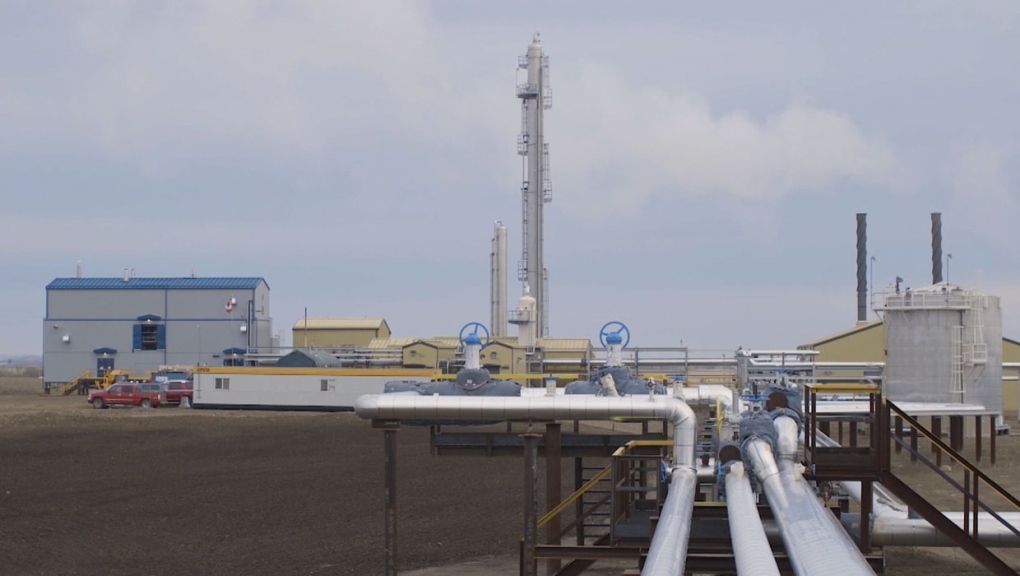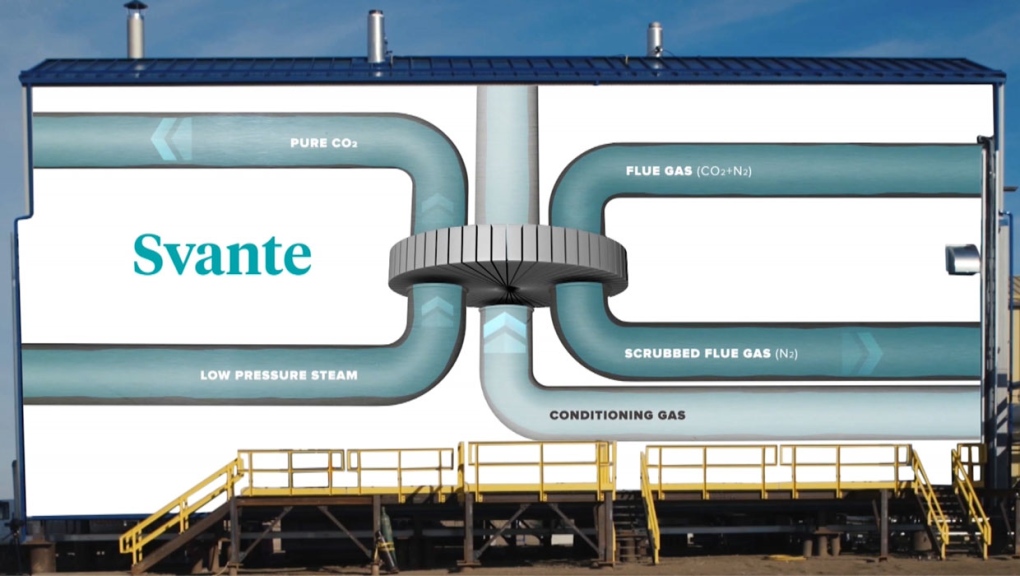Material, created in U of C lab, can absorb 95% of the emissions of a cement plant: study
 Carbon capture technology created in Calgary is drawing attention for its ability to dramatically cut down emissions.
Carbon capture technology created in Calgary is drawing attention for its ability to dramatically cut down emissions.
The University of Calgary has revealed the "game changing" results of a partnership between scientists and the gas separation industry that created a new material for use in carbon capture.
Officials say the "highly refined" metal-organic framework (MOF) called Calgary Framework 20 or CALF-20, is a class of super-absorbent material that has an extremely high ability to capture carbon dioxide and prevent it from reaching the atmosphere.
According to a scientific study, the material has contained 95 per cent of the emissions from a Vancouver cement manufacturing plant.
"Since January, our material has been capturing one tonne of carbon dioxide a day — that’s a first for the MOF field," said Dr. George Shimizu, Faculty of Science professor at the U of C and operator of the lab where the innovation was created.
"As far as an industrial demonstration using MOFs, this is the very first demonstration in the world."

Such promising results could have a huge benefit for Alberta's energy sector, he says.
"It makes it less risky for someone else to want to try this novel material at an even bigger scale. It's really trailblazing a path for this entire class of compounds," Shimizu said.
The lab, along with other scientists around the world are also investigating ways to reuse captured CO2 and other gases for new products.
The full study was published in the Dec. 16 issue of the international journal Science.
CTVNews.ca Top Stories

Richard Perry, record producer behind 'You're So Vain' and other hits, dies at 82
Richard Perry, a hitmaking record producer with a flair for both standards and contemporary sounds whose many successes included Carly Simon’s 'You’re So Vain,' Rod Stewart’s 'The Great American Songbook' series and a Ringo Starr album featuring all four Beatles, died Tuesday. He was 82.
Hong Kong police issue arrest warrants and bounties for six activists including two Canadians
Hong Kong police on Tuesday announced a fresh round of arrest warrants for six activists based overseas, with bounties set at $1 million Hong Kong dollars for information leading to their arrests.
Read Trudeau's Christmas message
Prime Minister Justin Trudeau issued his Christmas message on Tuesday. Here is his message in full.
Stunning photos show lava erupting from Hawaii's Kilauea volcano
One of the world's most active volcanoes spewed lava into the air for a second straight day on Tuesday.
Indigenous family faced discrimination in North Bay, Ont., when they were kicked off transit bus
Ontario's Human Rights Tribunal has awarded members of an Indigenous family in North Bay $15,000 each after it ruled they were victims of discrimination.
What is flagpoling? A new ban on the practice is starting to take effect
Immigration measures announced as part of Canada's border response to president-elect Donald Trump's 25 per cent tariff threat are starting to be implemented, beginning with a ban on what's known as 'flagpoling.'
Dismiss Trump taunts, expert says after 'churlish' social media posts about Canada
U.S. president-elect Donald Trump and those in his corner continue to send out strong messages about Canada.
Heavy travel day starts with brief grounding of all American Airlines flights
American Airlines briefly grounded flights nationwide Tuesday because of a technical problem just as the Christmas travel season kicked into overdrive and winter weather threatened more potential problems for those planning to fly or drive.
King Charles III is set to focus on healthcare workers in his traditional Christmas message
King Charles III is expected to use his annual Christmas message to highlight health workers, at the end of a year in which both he and the Princess of Wales were diagnosed with cancer.

































